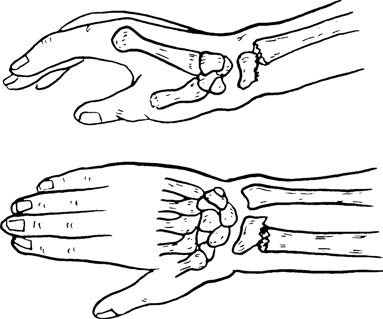A flexion-type distal radius fracture (Smith fracture) typically results from a fall where the wrist is in flexion and the back of the hand absorbs the impact, or it can occur due to direct trauma to the dorsum of the wrist. This type of fracture is less common than extension-type fractures.
Clinical Manifestations and Diagnosis
After the injury, the wrist may droop, with localized swelling, subcutaneous bruising on the dorsal side of the wrist, and restricted wrist mobility. Localized tenderness is evident upon examination. X-ray imaging reveals the characteristic displacement: the proximal fragment is displaced dorsally, while the distal fragment is displaced volarly and ulnarly. Additional injuries may include damage to the distal radioulnar joint, ulnar styloid process fractures, and triangular fibrocartilage complex injuries. Since the direction of displacement is opposite to that of extension-type fractures, this injury is also referred to as a reverse Colles fracture.

Figure 1 Typical displacement of fracture fragments in flexion-type distal radius fractures
Treatment
Treatment includes closed reduction followed by splint or plaster fixation. The reduction technique is the opposite of that used for extension-type fractures, though the basic principles remain the same. If the fracture is highly unstable after reduction and external fixation cannot maintain alignment, open reduction with internal fixation is performed.